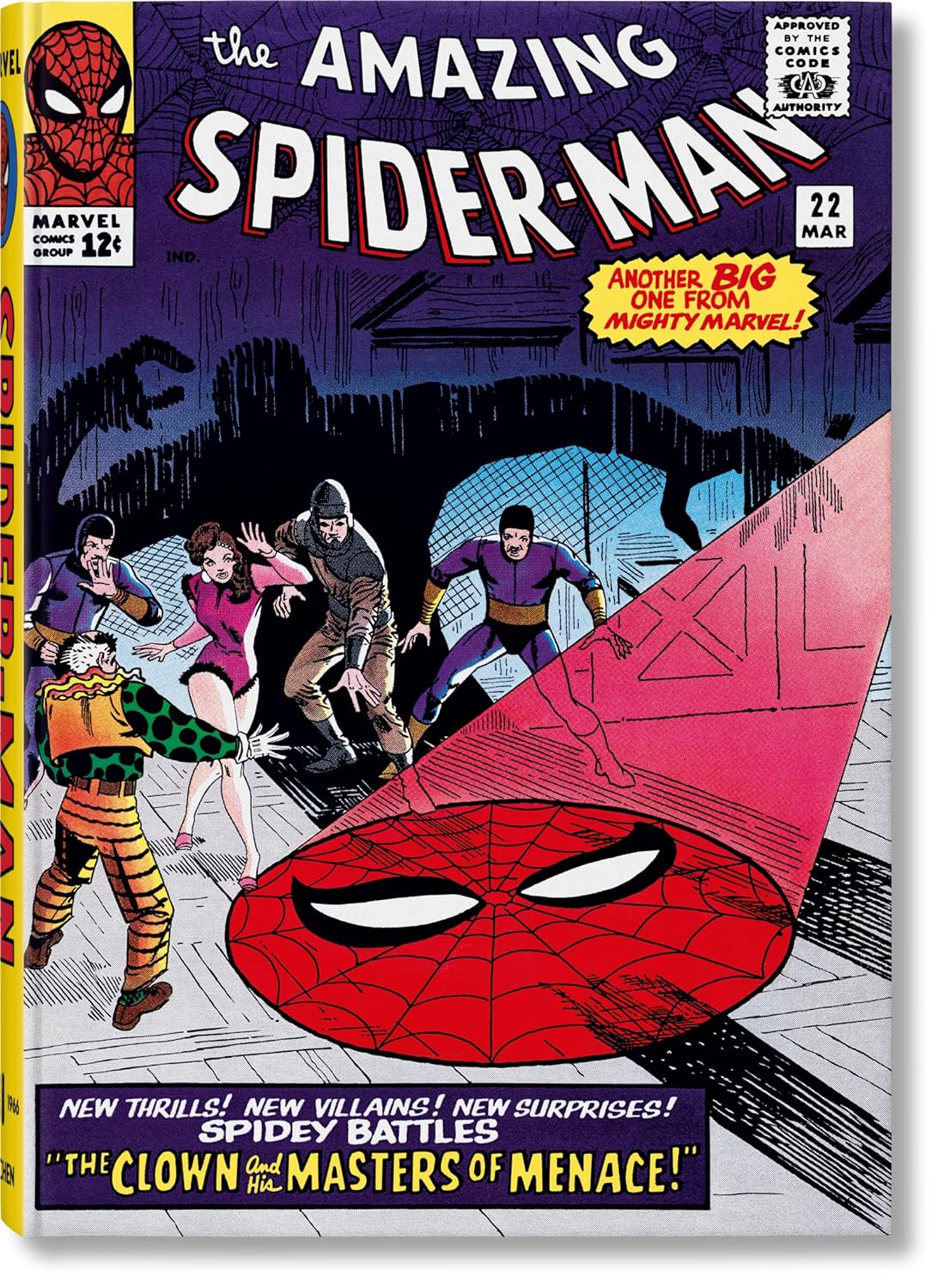Spider-Man tangles with Doc Ock, Kraven, and the Green Goblin, while Peter Parker navigates the perils of teen romance in the second half of Lee and Ditko’s Amazing Spider-Man magnum opus. This volume in the Eisner-Award winning series sources the highest quality comic books to reproduce meticulous editions that would make Aunt May proud.
Stan Lee and Steve Ditko's Momentous Final Spider-Man Run
Their collaboration on Spider-Man couldn’t last forever—but the five-years of Stan Lee and Steve Ditko’s remarkable partnership lasted long enough for their character to evolve into a timeless icon and create a fandom that would last generations. TASCHEN’s second volume of Amazing Spider-Man stories collects the latter half of the duo’s magnum opus, featuring brand new arch-villains the Scorpion, Molten Man, and the Crime-Master, return engagements with Kraven the Hunter and the Green Goblin—and the three-part “Master Planner Saga” that reignited a feud with an iconic mystery villain, and left behind what many comics critics declare to be the greatest super hero story of all time.
Beyond the action that faced Spider-Man—all choreographed with aplomb by the master stylist Ditko—there was also the matter of Peter Parker’s maturation during a decade of social upheaval and change. With Stan Lee’s blend of soap opera melodramatics and finger-on-the-pulse social sensitivities, Peter graduated from high school to college and started to deal with a myriad of adult struggles, mirroring the life experiences of the book’s readership. A scrawny teenager no more, Lee and Ditko would widen his network of friends and frenemies, debuting Gwen Stacy, Harry Osborn, and, in a series of hilarious cameos, Mary Jane Watson—all characters that would develop into one of the deepest and most substantive supporting casts in all of comics. Also introduced is Harry’s father, Norman Osborn, the short-tempered industrialist who would later be revealed as Spider-Man’s most dreaded foe. Meanwhile, Peter’s up-and-down romance with Betty Brant would reach its culmination with both changed forever.
Collected in an XXL-size volume that closely simulates the size and proportions of the original comic artboards, all individual issues have been sourced from the collection of Bob Bretall, holder of the Guinness World Record for largest comics collection. Bretall’s pedigreed collection has been photographed using TASCHEN’s sterling reproduction methods, resembling the way these comics first looked when initially published in 1965 and 1966, while also being digitally remastered using modern retouching techniques to correct problems with the era’s inexpensive, imperfect printing. A custom paper stock was exclusively developed for this series to simulate the newsprint feel and color holding of the original comics. The Marvel Comics Library has earned well-deserved raves from comic collecting diehards for combining an old school comic book reading experience with a luxurious oversized book format, winning the industry’s coveted Eisner Award for Best Publication Design.
Complementing the comics is an incisive and often side-splitting essay by British TV and radio host Jonathan Ross. Accompanying his essay is a gallery of original art, photographs, rarities, and other ephemera of the era.
Steve Ditko was born in 1927 in Pennsylvania. He studied under Jerry Robinson at the Cartoonists and Illustrators School in New York and began working at Atlas Comics, the precursor to Marvel Comics, in the mid-1950s. He made his name as the artist and cocreator, with Stan Lee, of Spider-Man and as creator of Doctor Strange, securing his legacy as a consummate storyteller and a key figure of the Marvel Age.
Stan Lee (1922–2018) is known to millions as the man whose super heroes propelled Marvel to preeminence in the comic book industry. His co-creations include Spider-Man, the Incredible Hulk, X-Men, the Fantastic Four, Iron Man, and hundreds of others. While the Chairman Emeritus of Marvel, he was also the Chief Creative Officer of POW! Entertainment, where he created numerous new characters and stories in areas including publishing, film, TV, and documentary.

